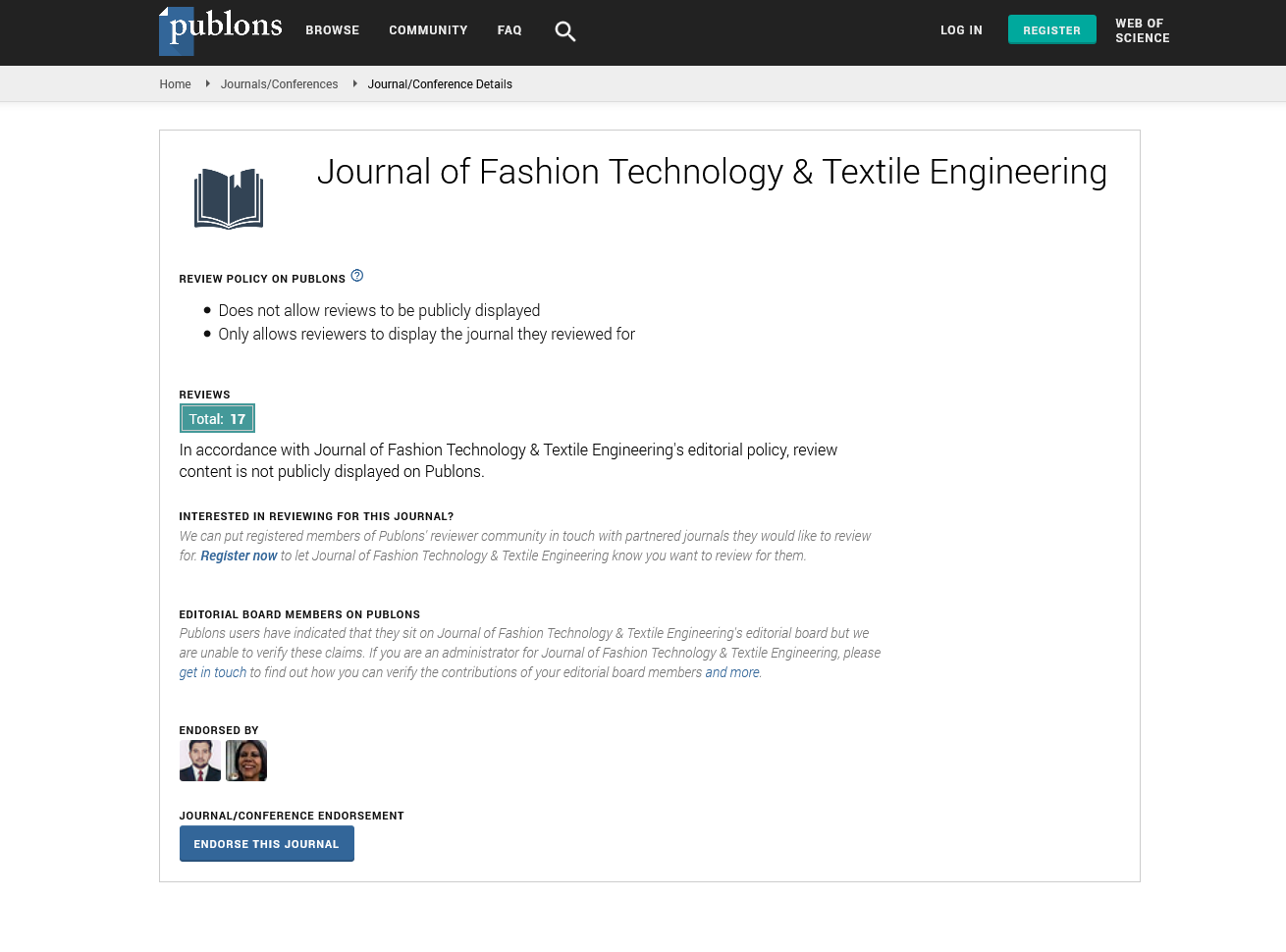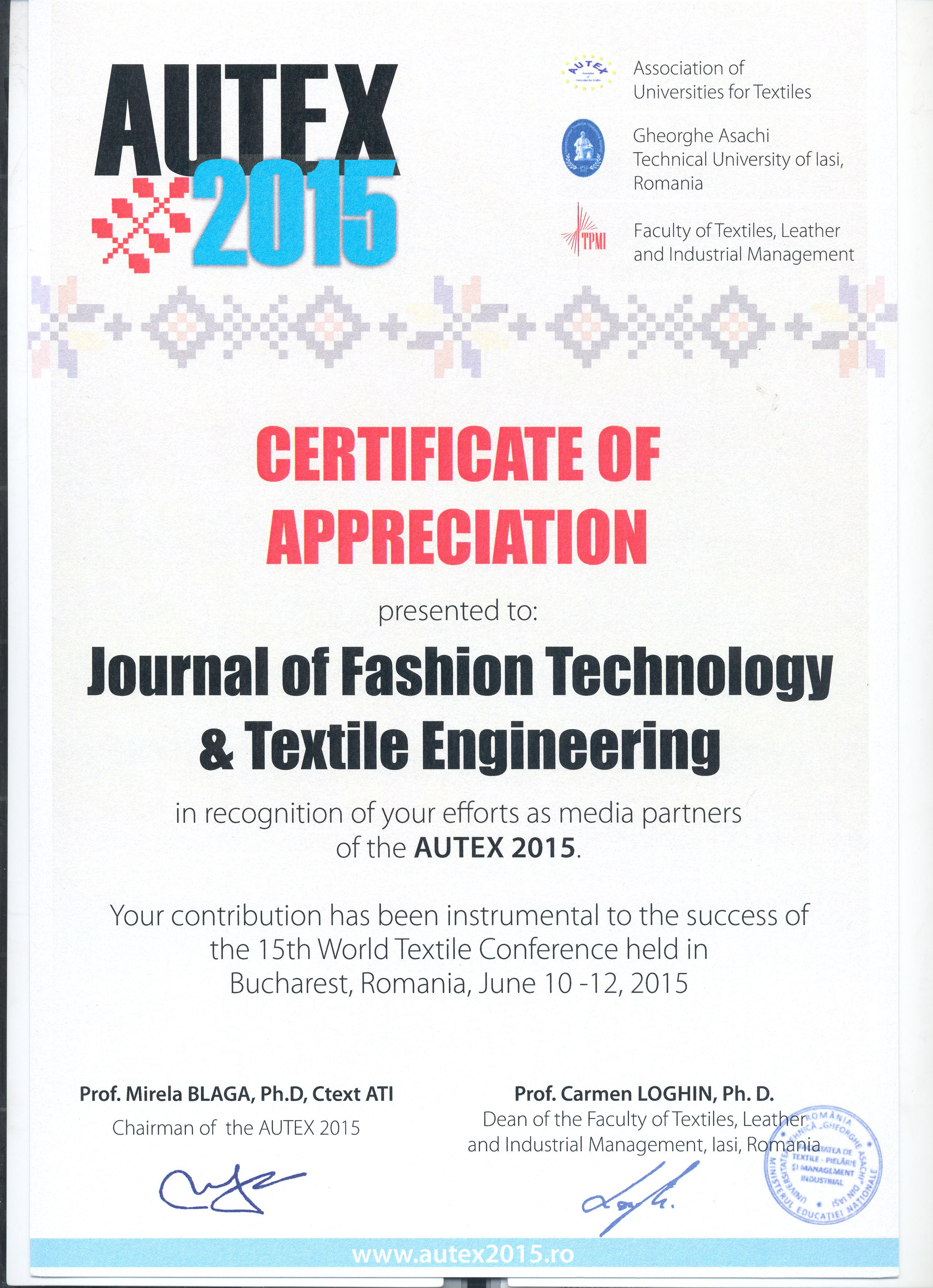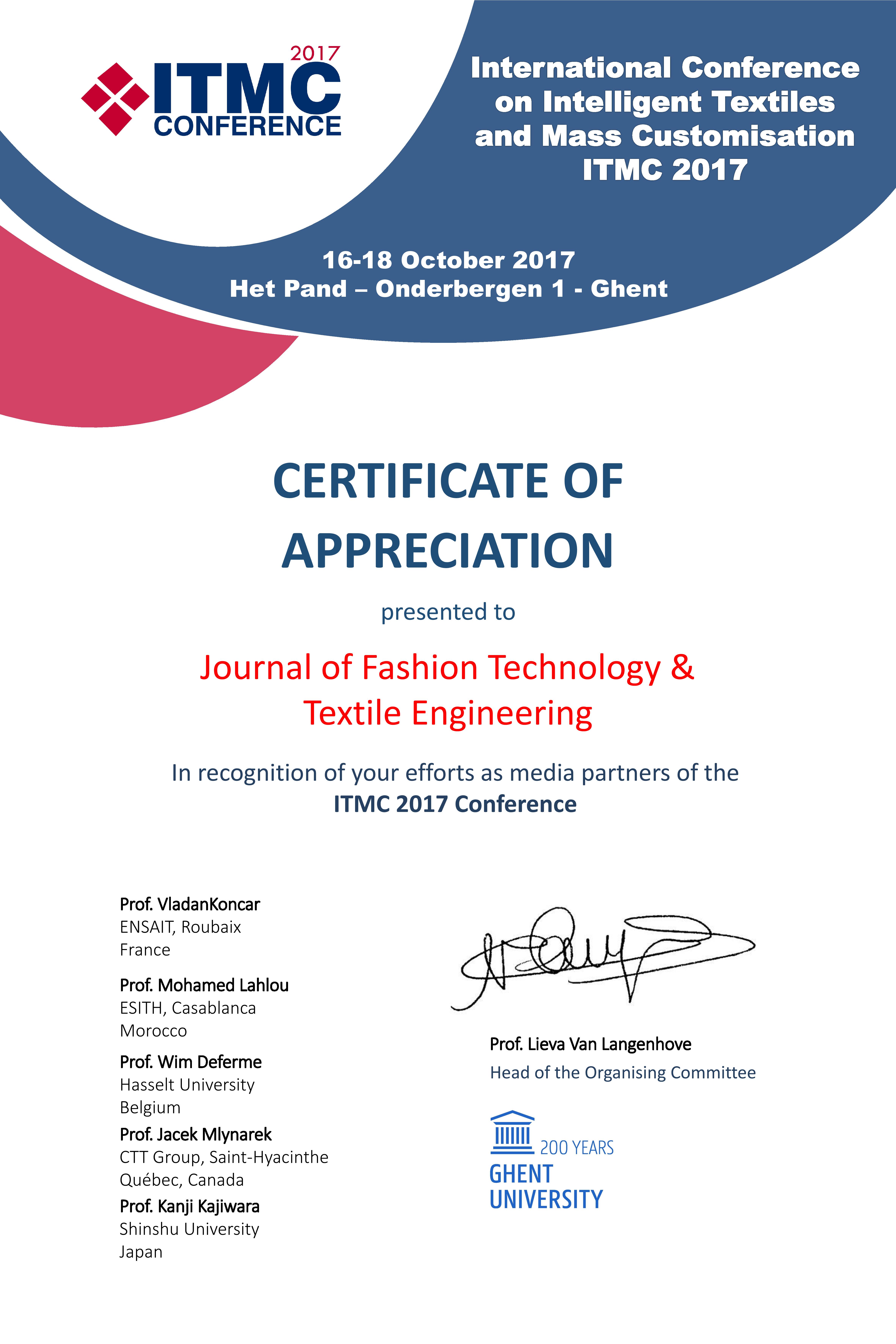Commentary, J Fashion Technol Textile Vol: 12 Issue: 6
Ikkat Fabric: A Rich Tradition in the Fashion Industry
Shivani Jasim*
1Department of Textiles and Apparel Management, University of Missouri, Columbia, USA
*Corresponding Author: Shivani Jasim
Department of Textiles and Apparel
Management, University of Missouri, Columbia, USA
E-mail: shivani_ja.sim@gmail.com
Received date: 26 November, 2024, Manuscript No. JFTTE-24-155262;
Editor assigned date: 28 November, 2024, PreQC No. JFTTE-24-155262 (PQ);
Reviewed date: 12 December, 2024, QC No. JFTTE-24-155262;
Revised date: 20 December, 2024, Manuscript No. JFTTE-24-155262 (R);
Published date: 27 December, 2024, DOI: 10.4172/2329-9568.1000384.
Citation: Jasim S (2024) Ikkat Fabric: A Rich Tradition in the Fashion Industry. J Fashion Technol Textile 12:6.
Description
Ikkat fabric is a distinctive textile in the fashion world due to its unique and complex patterning technique. Originating from various regions across the globe such as India Southeast Asia and Central America ikkat is famous for its vibrant designs and the complexity involved in its production. This fabric is made using a tie-dye technique where the yarns are dyed before they are woven together. The process requires huge skill and precision and is one of the oldest and most valued weaving techniques still in use today. The ikkat technique begins with the careful tying and dyeing of threads in specific patterns before they are woven into fabric. This pre-dyeing process gives ikkat its characteristic blurred or rough design. The patterns range from simple geometric shapes to complex styles that often carry symbolic meanings. In India for example ikkat fabrics are closely associated with regional identity and are woven with designs that reflect cultural heritage and traditions. The skillful dyeing process can produce vibrant colours and prominent patterns making the fabric highly required after for both traditional and contemporary fashion.
In the past ikkat fabric was primarily used for making garments such as sarees turbans and scarves. The fabric’s complex designs made it a symbol of luxury and craftsmanship in many cultures. In India for instance ikkat was once worn by royalty and nobility and its production was closely guarded by master weavers given their knowledge through generations. The tradition of ikkat weaving was often confined to specific regions where the craft was developed and refined. In the state of Odisha ikkat is known as “Bandha” and is used for making sarees while in Gujarat it is called “Patola” and is admired for its elaborate designs and fine craftsmanship.
The adaptability of ikkat fabric extends beyond traditional garments. Over the years it has been combined into modern fashion collections gaining recognition for its ability to blend traditional craftsmanship with modern design. Today ikkat is used to make a wide range of fashion items including dresses skirts blouses and even accessories like bags and shoes. The fabric’s vibrant colors and unique patterns advance a little of authenticity and heritage to any modern outfit. Designers around the world are increasingly embracing ikkat as part of their collections producing fusion styles that combine the endless application of this traditional fabric with the trends of the modern fashion industry.
The important reasons for ikkat's popularity in modern fashion is its ability to adapt to different fabrics and styles. Whether it's a cotton ikkat for casual wear or a luxurious silk ikkat for formal occasions this fabric has proven its adaptability across various fashion categories. Its texture and appearance vary depending on the type of dyeing and weaving techniques used which allows designers to experiment with different looks and styles. In addition, ikkat can be incorporated into various types of clothing from high fashion runway shows to everyday wear. The traditional method of making ikkat fabric is a laborintensive process requiring a high level of skill and precision.
Conclusion
In conclusion ikkat fabric is much more than just a textile it is a piece of cultural history and artistic expression. The complex designs and techniques associated with ikkat weaving remain to inspire designers while acclaim the rich heritage behind the fabric. As the fashion industry continues to change ikkat remains a powerful symbol of craftsmanship sustainability and cultural power. Each piece of fabric is often the result of months of work and dedication. This makes ikkat fabric not only valuable for its artistic qualities but also for the cultural significance it carries. As modern fashion progressively turns to sustainable and artisanal practices the demand for ikkat fabric has seen a reappearance. Many designers and consumers are choosing to support traditional artisanship as part of a broader movement towards sustainable fashion.
 Spanish
Spanish  Chinese
Chinese  Russian
Russian  German
German  French
French  Japanese
Japanese  Portuguese
Portuguese  Hindi
Hindi 


